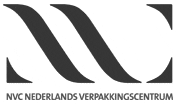Study finds viewing images of high-calorie foods may bring on high-calorie cravings
At The Endocrine Society’s annual meeting on July 23-26 in Houston, researchers from the University of Southern California (USC) demonstrated how viewing pictures of high-fat foods and drinking sweetened beverages while viewing the pictures stimulate appetite and reward centers in the brain.
Page and colleagues used functional MRI to measure the brain responses of 13 obese, Hispanic women ranging in age from 15 to 25. Women were chosen because prior research has shown that they are more responsive to food cues; the study group was narrowed to Hispanic women because of the high risk of obesity and Type 2 diabetes in the Hispanic community.
The women’s brain responses were scanned twice as they looked at pictures of high-calorie foods, such as hamburgers, cookies and cakes, and low-calorie foods, such as fruits and vegetables. After seeing the high-calorie and low-calorie groupings, the participants rated their hunger and desire for sweet or savory foods on a scale from one to 10.
Halfway through the scans, the women drank 50 grams of glucose — equivalent to a can of soda — and another time, they drank 50 grams of fructose. Glucose and fructose are the main components of table sugar and high-fructose corn syrup.
“We hypothesized that the reward areas in the women’s brains would be activated when they were looking at high-calorie foods, and that did happen,” Page said. “What we didn’t expect was that consuming the glucose and fructose would increase their hunger and desire for savory foods.” (News Item USC, 28 June 2012).

